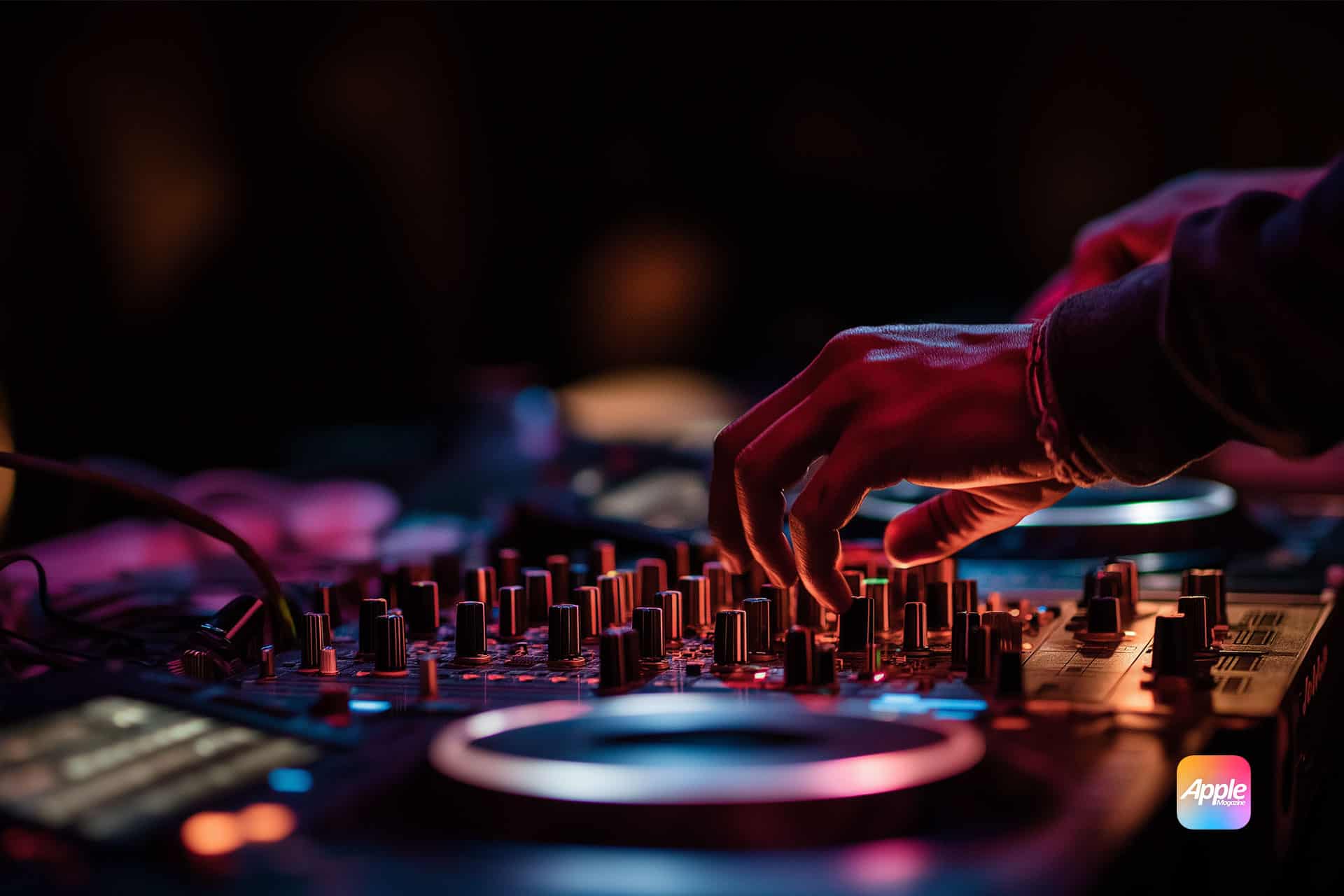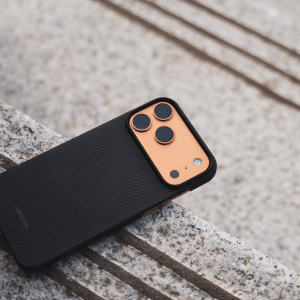Debuting in May 2025 with the beta iOS release (iOS 26), AutoMix seamlessly blends one song into the next using artificial intelligence. For Apple users, this means playlists that flow without awkward silences or jarring transitions.
The result feels like having a personal DJ in your pocket that eliminates dead air between tracks for a smooth sonic experience.
What AutoMix Actually Does
Back-to-back songs now feel like a single continuous mix. AutoMix analyzes each track’s tempo and musical keys, then chooses the perfect moment to transition, often on the downbeat or at a lull, much like a human DJ would. A subtle “Mixing…” animation appears on the Now Playing screen as the changeover happens, signaling that AutoMix is intelligently blending the audio in real time.
In essence, it works very differently from the standard Crossfade feature available in Spotify, which simply crosses over from one track to another to avoid a gap of silence.
While the feature is still in beta, those with early access have been raving about how natural it feels. Tracks with similar
BPMs and styles glide almost imperceptibly into each other, even genres with differing tempos get handled gracefully via subtle speed adjustments and smart exit/entry points. For instance, below’s a TikTok showing Pink Floyd’s Time instantly sliding into Michael Jackson’s Thriller with beats aligned and tempo matched. What do you think about the transition?

How AutoMix Works on iPhone
DSP Meets Artificial Intelligence
The feature is powered by a blend of classic digital signal processing and modern on-device AI, all optimized for Apple’s hardware.
At its core, AutoMix performs beat matching and time-stretching of audio tracks. This means it detects the rhythm (beats per minute) of the current song and the next song, aligns them in time, and if necessary, slightly adjusts the playback speed of one track so that the beats hit together.
Crucially, it does this without changing the music’s pitch – a feat achieved through time-stretching algorithms that preserve tonal quality even when the tempo is altered.
Apple confirms that AutoMix analyzes audio features of each song, including tempo and key, to craft these unique transitions. If two songs have clashing musical keys, the system will likely find a natural break or use a simple overlap to avoid dissonance. If they’re harmonically compatible, it might overlay them longer for a more complex mix. All of this happens dynamically as your playlist runs.
On-Device Intelligence
Apple has designed AutoMix to run entirely on the device, tapping into the iPhone’s powerful media engine and Neural Engine. Most notably, they don’t label AutoMix as an Apple Intelligence (AI) feature that would be limited to only the newest chips. On the contrary, AutoMix works on any iPhone that supports the latest iOS (iPhone 11 and newer in this case).
Such a broad compatibility suggests the underlying computations are efficient. Likely, Apple has precomputed much of the necessary song data in Music’s catalog (e.g. each track’s beat timing grid and key signature), downloading those metadata along with the track. The heavy lifting of analyzing a song’s structure can thus be done once (on Apple’s servers or during the device’s idle time) rather than in the middle of your listening session.
Still, the real-time mixing such as synchronizing beats and stretching the audio happens on your iPhone as the songs play. Apple’s A-series chips include specialized audio processing units and Neural Engine cores that make this possible.
Of course, the Neural Engine (Apple’s AI co-processor) can quickly run any machine learning models needed for audio feature detection, while the CPU/GPU and DSP handle the actual audio rendering.
For example, an ML model might assist in precisely detecting the beat locations or identifying the best transition point such as the end of a musical phrase. The iPhone’s audio framework (built on Core Audio) then handles the overlap. One audio stream fades out while the next fades in, with their tempos synced. Apple replaces the old fixed crossfade with this smarter system transparently.
From the user’s perspective, you just hear one song melt into the next at the perfect moment.

Integration with iOS Audio Stack
AutoMix is implemented at the application level (within the Apple Music app) but utilizes system-level capabilities. The Apple Music player in iOS 26 essentially gains a DJ brain. It signals to the system’s audio engine when to start the next track and at what tempo. Under the hood, this could be using an AVAudioEngine or Audio Units for time-pitch adjustment.
A Fun Observation: iOS has an Audio Unit called ‘VAudioUnitTimePitch’ for time stretching. Apple likely employs a variant of this to speed up or slow down a track without affecting pitch.
The smoothness is also thanks to Apple’s high-quality resampling algorithms. When tempo is adjusted, audio frames must be interpolated carefully to avoid artifacts. Apple’s years of experience with audio (from GarageBand to Logic Pro’s algorithms) are at play here, ensuring that even a significant BPM change doesn’t produce a noticeable warble or echo.
Moreover, because AutoMix is an on-device feature, there’s no network latency or buffering beyond the normal song preload. As such, the transitions happen whether you’re online or offline with downloaded songs. The Apple Music app provides a simple interface with no manual controls for AutoMix beyond the on/off choice.
Essentially, it engages automatically at each track boundary. If you skip to the next song manually, AutoMix will skip any fancy transition and cut straight over, since a DJ-style mix only makes sense for natural play-through.

AutoMix vs. Spotify’s AI DJ
Apple’s AutoMix is built right into Apple Music (iOS 26+, Apple Music subscription required) and simply toggles on or off.
Spotify’s AI DJ, by contrast, is a cloud‑powered “radio DJ” that curates personalized streams of full tracks with an AI voice guide and now accepts voice‑command requests. It emphasizes discovery and commentary, not live mixing. Tracks simply play back‑to‑back rather than tempo‑matched, therefore it lacks any beat‑matching or smoothing between songs.
Where this could evolve further is in the rise of AI companion DJs. Websites like Candy AI, known primarily for emotionally responsive AI characters, are experimenting with personality-driven digital companions, some of the characters there are there to music interaction and presented as actual DJs personality. Imagine an AI DJ who not only beat-matches in real time, but also learns your moods, comments on your listening habits, and queues sets to match your day. It’s a step beyond automation, toward deeply personalized, conversational music curation.
In practice, AutoMix and Spotify’s AI DJ both deliver seamless dance‑floor‑style mixes, whereas Spotify’s AI DJ provides a voice‑narrated personalized playlist with minimal audio mixing.

A Curious Look Ahead
With tempo and key data already stored for millions of songs and the Neural Engine handling beat-sync on device, an iPhone can spin up continuous stations that raise the tempo for workouts, calm down for focus sessions, or build energy for night drives, all without the listener touching a control.
Moreover, it hints at a future where spoken-word content might also be auto-mixed with music beds, a task traditionally done manually by audio engineers.
Apple’s focus on audio clarity shows that tedious audio tasks like leveling voices or mixing in music may soon be handled automatically by on-device intelligence and embedded hardware.
Likewise, if gap-free remixes become standard, labels will respond. More tracks will ship with BPM, key, and even stem metadata so algorithms can isolate drums or vocals for cleaner overlaps, similar to stem packs used by professional DJs.
Competing services will likely adopt tempo-matching, and third-party apps may focus on fresh effects now that Apple handles the hard math of synchronizing beats for them.
Sometimes, it’s not a bad idea to let someone else solve your problems.









